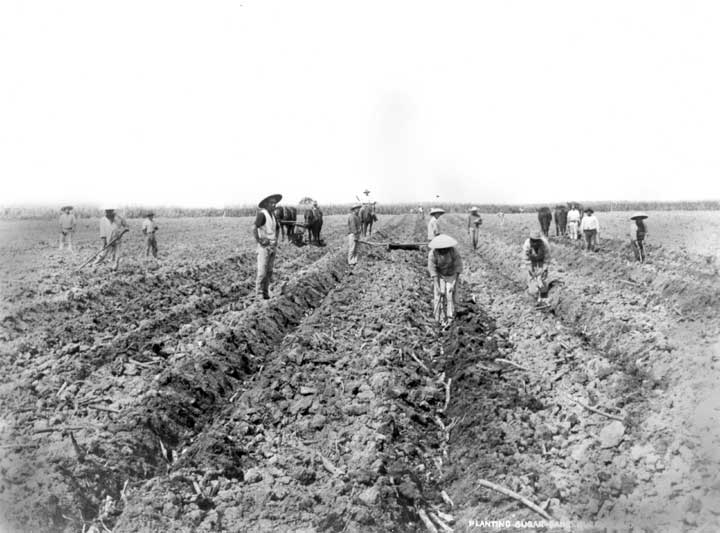 Chinese farm workers planting cane, Cairns, 1890s
Chinese farm workers planting cane, Cairns, 1890s
TLF ID R8179
This is a black-and-white 1890s photograph portraying about 12 men, presumed to be Chinese as some wear conical hats, manually laying sugar-cane cuttings, or setts, at regular intervals in long furrows in a large paddock on Hambledon Sugar Plantation near Cairns in Queensland. In the background are a mounted overseer supervising their work and two horsedrawn ploughs tilling more furrows in the extensive field.
